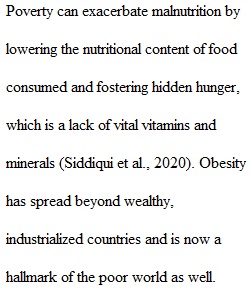


Q Part 2 will include the following: Worth 25 possible points 1. Statement of problem – Any revisions needed from Part 1. 2. Background information - Describe the history of the issue, how long has it been an issue & solutions that have been tried. You will need to research multiple sources and also interview experts and stakeholders. In-text citations need to be in APA format. This will be 2-3 paragraphs. 3. Barriers or challenges - State three (3) barriers or challenges that are making it difficult to solve this issue. Paragraph for each barrier. 4. Stakeholders - List three (3) stakeholders for your problem who are affected by this issue and a brief statement as to how they are affected. Paragraph 5. Stakeholder perspective - For one of the stakeholders, give multiple perspectives/points of view that they might have about your issue. How do they feel about this issue and how are they impacted? This is where you would include information from the interviews you have done. One paragraph. Note: Your Final Plan will include a paragraph for each of the three stakeholders. 6. List any help with resources you may need. Make sure to include your APA format in-text citations and references! Additional information in Advocacy Plan Advocacy Plan Part 2 Advocacy Plan Part 2 Criteria Ratings Pts This criterion is linked to a Learning OutcomeBackground Well researched history of issue described in 2-3 paragraphs with references 7.0 pts Full Marks 0.0 pts No Marks 7.0 pts This criterion is linked to a Learning OutcomeBarriers Three clear barriers described for issue. Paragraph for each one. 7.0 pts Full Marks 0.0 pts No Marks 7.0 pts This criterion is linked to a Learning OutcomeStakeholders & Perspectives Three stakeholders described in paragraph. Multiple perspectives for one stakeholder described in paragraph. 8.0 pts Full Marks 0.0 pts No Marks 8.0 pts This criterion is linked to a Learning OutcomeWriting Writing is in APA format as are citations and references. Writing is clear and free of grammar and spelling errors. Includes any corrections needed from Part 1. 3.0 pts Full Marks 0.0 pts No Marks 3.0 pts Total Points: 25.0 PreviousNext
View Related Questions